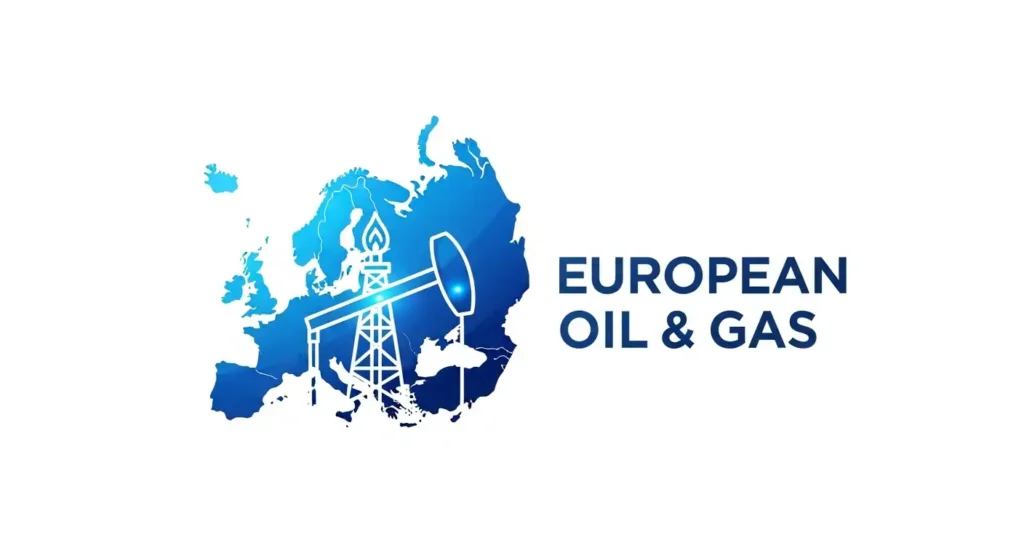
European Oil & Gas
This article explores the critical shift in European oil and gas markets, focusing on the historic decoupling from Russian energy supplies. For decades, Russia was the dominant force in European oil and gas, a relationship built on Soviet-era pipelines and post-Cold War commercial ties. This article delves into the foundations of this energy codependency, the geopolitical weaponization of energy, and Europe's determined pivot towards energy independence. We will cover the sanctions, the scramble for new suppliers like the U.S. and Qatar, and the profound economic consequences for both Russia and the major European economies. The future of European oil and gas is being reshaped, with a focus on LNG, renewable energy, and a new global energy security paradigm.
Article Index
- The Foundations of a Codependent Relationship: 1960-2021
- The Rupture: The 2022 Invasion and the Weaponization of Energy
- Europe's Response: Sanctions, Diversification, and the Race for Energy Security
- The New Reality: Russian Energy in Europe Today
- Economic and Geopolitical Consequences
- Strategic Outlook and Future Trajectory
TL;DR
For over fifty years, Europe's economy was deeply intertwined with Russian energy, creating a multi-trillion-dollar codependency. Russia, as the EU's largest supplier of oil and gas, used its vast reserves to generate critical revenue and exert political influence. This relationship, institutionalized through pipelines like Druzhba and Nord Stream, was shattered by the 2022 invasion of Ukraine. Russia's weaponization of energy backfired, catalyzing a historic European push for energy independence. The EU responded with sweeping sanctions, an oil embargo, and the REPowerEU plan to eliminate all Russian fossil fuel imports by 2027 by diversifying suppliers and accelerating the green transition. Today, Russian pipeline flows are minimal, the Nord Stream pipelines are destroyed, and Europe's energy map is redrawn. Russia has lost its premium market, pivoting to Asia as a price-taker, while Europe, despite enduring a severe energy crisis, is building a more resilient, diversified energy architecture based on LNG and renewables. The half-century-long energy relationship is over, and its collapse will define the geopolitical landscape for decades.
The Foundations of a Codependent Relationship: 1960-2021
The intricate web of pipelines, contracts, and political understandings that defined the Russia-Europe energy relationship for over fifty years was not a natural market development. It was the product of deliberate, strategic decisions made during the Cold War, which created a structural codependency that persisted and deepened long after the fall of the Berlin Wall. This historical context is essential to understanding both the scale of Europe's pre-2022 vulnerability and the seismic nature of the subsequent decoupling. The relationship was always more than commercial; it was a core element of Soviet and later Russian statecraft, a fact often downplayed by European policymakers who prioritized the tangible economic benefits of cheap energy over the less tangible, but ultimately more severe, geopolitical risks.
Forging the Iron Arteries: The Soviet Era
The origins of Europe's energy dependence on Moscow lie in two monumental Soviet infrastructure projects: the Druzhba ("Friendship") oil pipeline and the transcontinental gas transportation system. The Druzhba pipeline, conceived in the late 1950s, was designed to lock the Eastern Bloc economies into a near-total reliance on Soviet oil. The expansion of natural gas exports followed the discovery of super-giant fields in Western Siberia, leading to landmark "gas for pipes" deals with Western European nations, particularly West Germany, who saw Soviet gas as a cheap and reliable alternative to Middle Eastern supplies. This burgeoning trade caused major transatlantic friction, with the U.S. fearing the Kremlin would gain dangerous political leverage, but European economic interests consistently prevailed.
The Post-Soviet Transit Dilemma
The dissolution of the Soviet Union in 1991 created a "transit dilemma," as the pipeline networks now crossed newly sovereign states. Ukraine became the single most important energy transit corridor, controlling the flow of approximately 80% of Russian gas to the EU. This led to bitter disputes, most notably the "gas wars" of 2006 and 2009, where Russia cut supplies through Ukraine, demonstrating its willingness to weaponize energy for political ends. These events exposed Europe's profound vulnerability but failed to trigger a unified strategy to reduce dependency.
The Bypass Strategy: Russia's Infrastructure Pivot
In response, Russia embarked on a long-term strategy to build new pipelines that bypassed its neighbors, aiming to strip Ukraine of transit leverage. This led to the construction of major projects like Nord Stream 1, which provided a direct sub-sea connection to Germany, and TurkStream to Turkey and Southeastern Europe. The culmination of this strategy was Nord Stream 2, a controversial project designed to double direct capacity to Germany. Despite fierce opposition from the U.S. and Eastern European states, the German government consistently defended it as a purely commercial enterprise until its certification was halted just days before the 2022 invasion.
The Peak of Interdependence (Pre-2022)
By 2021, Russia was the EU's undisputed top energy supplier, accounting for 45% of total gas imports, 27% of crude oil, and 46% of coal. Germany and Italy were the largest importers of Russian gas. The prevailing narrative in Brussels and Berlin was one of mutual "interdependence." However, this obscured a critical asymmetry: Europe needed Russia for an essential physical commodity, while Russia primarily needed Europe for revenue, a fungible asset. This imbalance gave Russia significant latent leverage, a reality Europe was forced to confront in 2022.
| Pipeline Name | Type | Route | Key Status |
|---|---|---|---|
| Druzhba (Northern Branch) | Oil | Russia -> Belarus -> Poland/Germany | Operational pre-2022 |
| Druzhba (Southern Branch) | Oil | Russia -> Ukraine -> Slovakia/Hungary/Czech Rep. | Partially operational under derogation |
| Urengoy–Pomary–Uzhhorod | Gas | Russia -> Ukraine -> Central Europe | Main transit route; contract expired end-2024 |
| Yamal-Europe | Gas | Russia -> Belarus -> Poland -> Germany | Flows halted by Russia in 2022 |
| Blue Stream | Gas | Russia -> Black Sea -> Turkey | Operational |
| Nord Stream 1 | Gas | Russia -> Baltic Sea -> Germany | Destroyed by sabotage in 2022 |
| TurkStream | Gas | Russia -> Black Sea -> Turkey/SE Europe | Operational |
| Nord Stream 2 | Gas | Russia -> Baltic Sea -> Germany | Completed but never certified; sabotaged in 2022 |
The Rupture: The 2022 Invasion and the Weaponization of Energy
Russia's full-scale invasion of Ukraine on February 24, 2022, shattered the decades-long energy relationship. Germany's halt of the Nord Stream 2 certification two days prior signaled the end of an era. In the following months, Russia systematically cut gas supplies to Europe under false technical pretenses, a strategy of energy blackmail designed to break European support for Ukraine. This culminated in the indefinite shutdown of Nord Stream 1 in August 2022. The strategy backfired, solidifying European resolve to achieve energy independence. The physical finality came in September 2022 with the sabotage of both Nord Stream pipelines. The last major channel, the Ukrainian transit system, ceased operations when its contract expired at the end of 2024, marking the effective end of large-scale Russian pipeline gas exports to the EU.
Europe's Response: Sanctions, Diversification, and the Race for Energy Security
The EU's response was historic. It implemented a sweeping sanctions regime, including a landmark embargo on Russian seaborne crude oil and petroleum products, which targeted over 90% of its oil imports from Russia. A temporary derogation was granted for pipeline crude to landlocked Hungary and Slovakia. In parallel, the G7+ coalition launched a novel Oil Price Cap (OPC) to curtail Kremlin revenues while keeping Russian oil on the global market. While effective initially, Russia adapted by creating a "shadow fleet" of tankers to circumvent the cap.
The centerpiece of the long-term strategy is the REPowerEU plan, a blueprint to end all Russian fossil fuel reliance by 2027 by saving energy, diversifying suppliers, and massively accelerating clean energy. This triggered a global scramble for LNG, with the U.S. rapidly becoming Europe's primary gas supplier. Germany, once wholly dependent on Russian pipelines, constructed five new LNG import terminals in under 18 months, symbolizing the continent's race to build a new energy security architecture.
| Date | Action | Key Impact |
|---|---|---|
| Apr 2022 | Ban on Russian coal imports | First direct energy sanction, relatively low market disruption. |
| Jun 2022 | Embargo on Russian seaborne crude oil & petroleum products announced | Landmark decision targeting the heart of Kremlin's revenue. |
| Dec 2022 | Seaborne crude oil embargo takes effect; G7+ Oil Price Cap ($60/bbl) launched | Strikes over 90% of EU's Russian oil imports and creates a new global price mechanism. |
| Jun 2024 | Ban on re-export of Russian LNG from EU ports | Targets Russia's LNG logistics chain, disrupting its global business. |
| Jul 2025 | Oil Price Cap reduced to $47.60/bbl with a new dynamic mechanism | Tightens financial pressure in response to Russian circumvention tactics. |
| Jul 2025 | Announced future ban (Jan 2026) on products made from Russian crude in third countries | Aims to close the "refining loophole" where Russian oil is processed elsewhere and sold to the EU. |
The New Reality: Russian Energy in Europe Today
The era of massive Russian pipeline exports to Europe is over. The only significant remaining flows are pipeline oil to Hungary and Slovakia via the Druzhba pipeline's southern branch and minimal pipeline gas via TurkStream. The most striking contradiction is the continued, and even growing, import of Russian Liquefied Natural Gas (LNG) into Western European ports in France, Spain, and Belgium. In 2024, Russian LNG was the EU's second-largest source, accounting for 14% of total LNG imports. This policy gap undermines the strategic goal of defunding the Kremlin and highlights the tension between security goals and market realities.
| Fuel Type | 2021 Volume (Pre-Invasion) | 2024 Estimated Volume (Post-Invasion) | Change |
|---|---|---|---|
| Pipeline Gas | ~155 bcm | ~10 bcm | -94% |
| Liquefied Natural Gas (LNG) | ~16 bcm | ~22 bcm | +38% |
| Pipeline Crude Oil | ~1 million bpd | ~0.25 million bpd | -75% |
| Seaborne Crude Oil | ~3 million bpd | Effectively Zero | -100% |
| Rank | Country | Import Value (€ million) | Primary Fuel |
|---|---|---|---|
| 1 | Hungary | €175 M | Pipeline Oil & Gas |
| 2 | France | €157 M | LNG |
| 3 | Slovakia | €110 M | Pipeline Oil & Gas |
| 4 | Netherlands | €65 M | LNG |
| 5 | Belgium | €64 M | LNG |
Economic and Geopolitical Consequences
The decoupling has had profound consequences. For Russia, sanctions and the loss of its premium European market have cost over $100 billion in lost export earnings. It has been forced into a "pivot to the East," becoming a price-taker dependent on China and India, who now buy its discounted oil. Redirecting pipeline gas is a much greater challenge, leaving Moscow's strategic Power of Siberia 2 pipeline project entirely dependent on Beijing's terms.
For Europe, the price of independence was a severe energy crisis, soaring inflation, and a painful economic adjustment for energy-intensive industries, particularly in Germany. Governments deployed hundreds of billions in fiscal support to cushion the blow. However, the crisis also forced structural changes, accelerating energy efficiency and the green transition, which may yield long-term benefits for the continent's competitiveness and resilience.
Strategic Outlook and Future Trajectory
A return to the pre-2022 energy relationship is politically and practically impossible. The trust is destroyed, new infrastructure has been built, new long-term contracts with other suppliers have been signed, and the green transition has been accelerated. The divorce is irreversible. Europe's new energy paradigm is one of diversification, but it brings new vulnerabilities, including exposure to volatile global LNG markets and new dependencies on critical raw materials for the green transition. Russia, while still a major energy producer, has seen its status as an energy superpower degraded. Its future is now tied to Asia, where it holds far less leverage. The great decoupling has permanently restructured global energy trade, and the ultimate lesson for Europe is that true energy security lies not in diversifying fossil fuel imports, but in reducing the need for them altogether.
Optimize Your Oil & Gas Workforce Management
Navigating the complexities of the modern oil and gas industry requires robust, reliable, and efficient workforce management solutions. TimeTrex offers specialized software to streamline scheduling, time tracking, and payroll for the unique demands of the energy sector.
Learn More About TimeTrex for Oil & GasDisclaimer: The content provided on this webpage is for informational purposes only and is not intended to be a substitute for professional advice. While we strive to ensure the accuracy and timeliness of the information presented here, the details may change over time or vary in different jurisdictions. Therefore, we do not guarantee the completeness, reliability, or absolute accuracy of this information. The information on this page should not be used as a basis for making legal, financial, or any other key decisions. We strongly advise consulting with a qualified professional or expert in the relevant field for specific advice, guidance, or services. By using this webpage, you acknowledge that the information is offered “as is” and that we are not liable for any errors, omissions, or inaccuracies in the content, nor for any actions taken based on the information provided. We shall not be held liable for any direct, indirect, incidental, consequential, or punitive damages arising out of your access to, use of, or reliance on any content on this page.
About The Author

Roger Wood
With a Baccalaureate of Science and advanced studies in business, Roger has successfully managed businesses across five continents. His extensive global experience and strategic insights contribute significantly to the success of TimeTrex. His expertise and dedication ensure we deliver top-notch solutions to our clients around the world.
Time To Clock-In
Start your 30-day free trial!
Experience the Ultimate Workforce Solution and Revolutionize Your Business Today
- Eliminate Errors
- Simple & Easy To Use
- Real-time Reporting

Saving businesses time and money through better workforce management since 2003.
Copyright © 2025 TimeTrex. All Rights Reserved.
